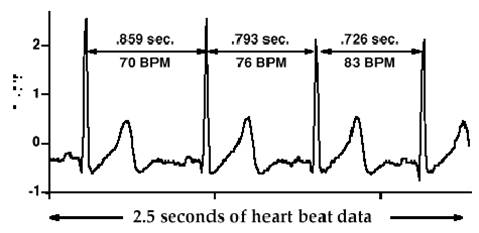HRV or heart rate variability is a rather old tool to monitor the status of the athlete. HRV was already used in the 1960’s and 1970’s in the former USSR for this purpose.
Nowadays unfortunately HRV is promoted and praised as being THE tool to e.g. measure recovery in an athlete. This is unfortunate for the coaches and athletes who believe that. I work a lot with HRV, measuring athletes and many other people with HRV as part of the Omegawave system, but also using HRV biofeedback working with the Procomp system of Thought Technology for many years. So: HRV as a measurement tool and as an interventional tool.
The danger is that by marketing HRV as THE way to measure recovery, using it as the single parameter indicating whether the body has recovered from a workout or not, leads to big mistakes. This mistake is logical and natural, very few people take the effort and trouble to deal with the complexity of physiology, biochemistry and adaptation. Most of us are looking for the one singular parameter that will tell it all. Somebody very smart stated a long time ago: “For every complex problem, there is a simple solution……. and it is wrong”.
There is no way in which HRV is able to tell you if you or your athlete is fully recovered and able to handle optimally the next training session! I wish that was true. HRV only tells you if your autonomic nervous system is back in balance again and let there be no doubt this is an important factor in recovery. But it is by far not the only factor. Your HRV might indicate you are fully recovered while other parameters (that you did not measure or take into account) are still way down in the red numbers: you are NOT recovered at all. Other physiological systems are at least as important for recovery as the autonomic nervous system:
• central nervous system,
• energy metabolism and fuel sources
• cardio-pulmonary system
• hormonal system
• neuro-muscular system and muscular proteins
• passive movement apparatus and bone, cartilage and collagen tissue
So there are many other factors that make up the complexity of recovery. Looking at just one factor has happened to us before: e.g. looking at resting heart rate only or at lactic acid level only, to tell us how our athletes were doing. Here is my message: never get trapped into the comfort of the singular parameter result as an indication of fitness, shape or recovery. The “one factor that tells it all” is an attractive looking dead end street. Yes, absolutely measure HRV, but when you take this as the only factor for recovery, in the long term you are doomed to fail as you are ignoring the other indicators.
In one of the next posts I will talk about the value of HRV measurement methods, some of them being completely useless

